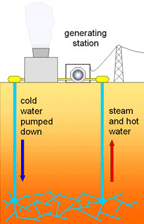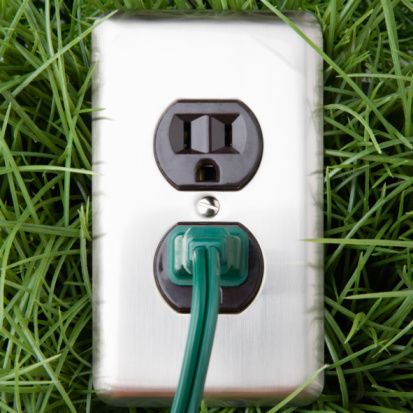Benefits of Green Energy Sources:
Clean. Green energy sources not only help to conserve nonrenewable fossil fuels, but they also reduce emissions that harm the atmosphere. In some cases, such as Waste to Energy Processing, fuel sources actually remove waste while cleaning up the land and environment.
Supporting Local Economies. Green energy sources eliminate the necessity to import foreign fuel, and therefore assist in keeping energy dollars at home. Moreover, by producing electricity locally, these sources enhance the economy by providing jobs and a greater environment for all the communities it serves.
Reliable. Localized green energy sources help communities become resistant to interruptions of power generation due to weather, natural disasters or political rifts that commonly interrupt the transportation of fossil fuels and cause fluctuations in energy prices.
Energy Methodologies
- Geothermal Harnessing
- Waste to Energy Processing
- Biomass Electricity Generation
- CO2 Utilization/Recycling
Geothermal Harnessing
 Geothermal Energy, converting earth’s internal heat into electricity, is growing in popularity as a viable alternative to traditional energy sources. By tapping in to the geothermal heat that resides within the Earth's crust, the United States could supply a substantial portion of the electricity needs in the future at a competitive price and with minimal environmental impact.
Geothermal Energy, converting earth’s internal heat into electricity, is growing in popularity as a viable alternative to traditional energy sources. By tapping in to the geothermal heat that resides within the Earth's crust, the United States could supply a substantial portion of the electricity needs in the future at a competitive price and with minimal environmental impact.
There are two common designs for geothermal power plants both pull hot water and steam from the ground, use it to create energy, and then return it as warm water to prolong the life of the heat source. In the simplest design, the steam goes directly through the turbine, then into a condenser where the steam is condensed into water. In a second approach, very hot water is depressurized or "flashed" into steam which can then be used to drive the turbine.
Most Geothermal plants drill local wells to reach the heat source. The high costs associated with drilling, however, have made many geothermal projects uneconomical. A new solution is to use abandoned oil and gas wells that not only relieve the upfront cost of drilling, but many wells contain hot water that can be used for heat transport. In Texas alone, there are approximately 600,000 abandoned oil wells which could be used to generate electricity.
The United States currently produces 2700 megawatts of electricity from geothermal energy, electricity comparable to burning sixty million barrels of oil each year.
Waste to Energy Processing
 Waste to Energy (WTE) Processing plants are an emerging independent, renewable replacement for power generation. Through the process of gasification and combustion, WTE creates 500-600 kWh for every ton of waste processed. WTE is not only a sensible, clean energy approach that cuts carbon footprints, but it also results in reducing landfill overflows.
Waste to Energy (WTE) Processing plants are an emerging independent, renewable replacement for power generation. Through the process of gasification and combustion, WTE creates 500-600 kWh for every ton of waste processed. WTE is not only a sensible, clean energy approach that cuts carbon footprints, but it also results in reducing landfill overflows.
A modern, large plant treating half-million tons of municipal solid waste per year can generate more than 400 million kWh per year, meeting the electricity needs of more than 150,000 families.
A WTE plant is comprised of four basic sections: the waste combustor, a recovery boiler, flue gas treatment and the steam cycle generator. The design of the combustor varies widely with the waste characteristics: physical state (solid vs. liquid), size distribution, heating value, ash and moisture content, etc. Many municipal treatment facilities are finding WTE processing plants a more reasonable solution to both growing energy demands and the increasing necessity to reduce our land fills.
Biomass Electricity Generation
 Using biomass energy as a renewable energy resource has advantages for our economy, energy independence, and the environment. The term "biomass" encompasses diverse fuels derived from timber, agriculture and food processing wastes or fuel crops that are specifically grown or reserved for electricity generation. There are many forms of biomass energy facilities, but the most common are direct-fired power plants and biomass gasification plants.
Using biomass energy as a renewable energy resource has advantages for our economy, energy independence, and the environment. The term "biomass" encompasses diverse fuels derived from timber, agriculture and food processing wastes or fuel crops that are specifically grown or reserved for electricity generation. There are many forms of biomass energy facilities, but the most common are direct-fired power plants and biomass gasification plants.
Direct-fired Power Plants
In dedicated direct-fired biomass operations, the boiler's fuel is 100% biomass which is burned in a conventional steam boiler. The steam is then captured by a turbine and converted to electricity by a generator.
Biomass Gasification
Biomass gasification converts biomass into a gas - methane - that can then fuel steam generators, combustion turbines, combined cycle technologies or fuel cells.
The Energy Information Administration (EIA) projects that biomass will be responsible for 15.3 Billion kWh of electricity generated by 2020.
CO2 Utilization/Recycling
 Recycling and reusing CO2 from the byproducts of fuel sources has become an attractive solution to CO2 emissions and fuel production. By chemical and biological methods, CO2 recycling facilities convert carbon emissions into reusable commercial materials. These materials, in turn, are desirable for many applications including glass manufacturing and algae biofuel production.
Recycling and reusing CO2 from the byproducts of fuel sources has become an attractive solution to CO2 emissions and fuel production. By chemical and biological methods, CO2 recycling facilities convert carbon emissions into reusable commercial materials. These materials, in turn, are desirable for many applications including glass manufacturing and algae biofuel production.
Another method of recycling CO2 is to convert carbon dioxide back into gasoline - specifically methanol and butanol. Roughly 75,000 metric tonnes of flue gas will produce almost double the tonnage in various sodium carbonate byproducts.
Recycling CO2 is a major player in the fight against carbon emissions. The Energy Information Association projects a 39 percent increase in worldwide carbon dioxide emissions from 2006 to 2030 if a solution is not reached. This totals a projected 40.4 billion tons produced per year by 2030. With more recycling facilities being brought online, the world may be able to combat the future environmental threats of CO2 emissions.
Electricity demand has increased 25% since 1990 but the construction of new transmission lines has decreased by 30%.
Each year, congestion causes the loss of more than 184 megawatts; enough electricity to power 16.7 million homes annually.


